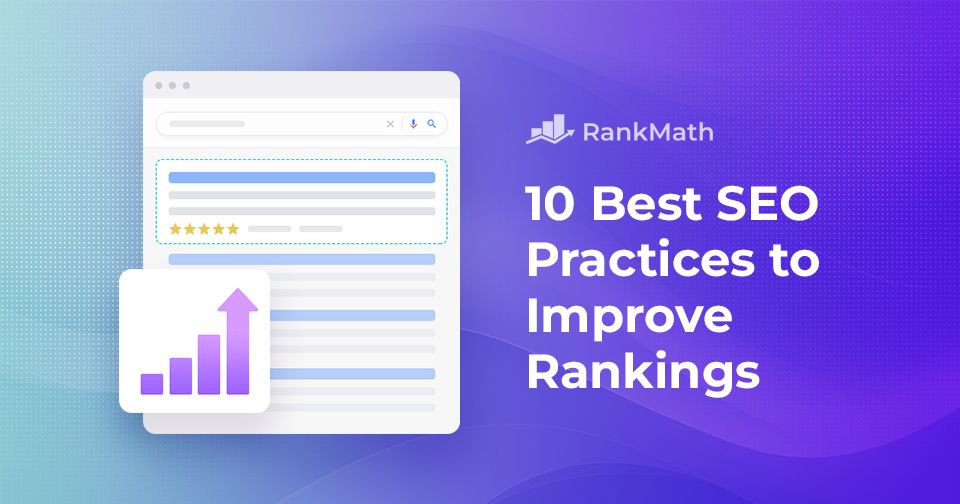In the era of artificial intelligence (AI), keeping up with the latest SEO practices is more important than ever.
Understanding and applying best SEO practices is not just an advantage — it’s a necessity.
These practices are important in enhancing your online visibility, driving traffic to your website, and, ultimately, growing your business.
In this post, we’ll discuss these practices, shedding light on the most effective strategies and tools in the world of SEO. We’ll provide you with actionable tips that you can implement right away to boost your website’s performance in search engine results.
So, without any further ado, let’s dive in and discuss the best SEO practices for your website.
Table Of Contents
- What Are the Best SEO Practices?
- Best SEO Practices
- Align Your Content With Search Intent
- Use Your Primary Keyword Correctly
- Write Compelling Title Tags and Meta Descriptions
- Optimize Your Images
- Add Internal Links
- Earn Backlinks to Build Authority
- Improve User Experience
- Create Useful Content
- Reduce Website Load Time
- Monitor Your Results With Google Search Console
- Frequently Asked Questions
- Wrapping It Up
1 What Are the Best SEO Practices?
Best SEO practices are a set of guidelines and strategies aimed at optimizing a website to improve its visibility in search engine results.
The higher your page ranks, the greater the likelihood that your audience will click through to your content.
Why?
Data reveals that securing the top spot in search engine rankings yields a noteworthy click-through rate (CTR) of 39.8%. This is more than double the CTR for the second position, which stands at 18.7%, and nearly four times the CTR for the third position, at 10.2%.
Hence, it’s necessary to follow the best SEO practices.
These SEO practices evolve in response to changes in search engine algorithms and user behavior. Some of these SEO practices include keyword research, quality content, on-page optimization, page speed optimization, technical SEO, backlink building, etc.
2 Best SEO Practices
Let us now discuss the SEO practices that’ll help improve your search engine rankings.
2.1 Align Your Content With Search Intent
Aligning your content with search intent is one of the best SEO practices that you must follow. It helps your content to match your audiences’ specific goals when entering search queries.
This involves a deep understanding of the various types of search intent, namely informational, navigational, transactional, and commercial intent.
If the intent is navigational, your content should guide the audience to the specific page or website they’re searching for. Transactional intent requires content facilitating a purchase or transaction, while commercial investigation intent demands in-depth content such as product reviews or comparisons.
For instance, consider the keyword “best budget smartphone.”
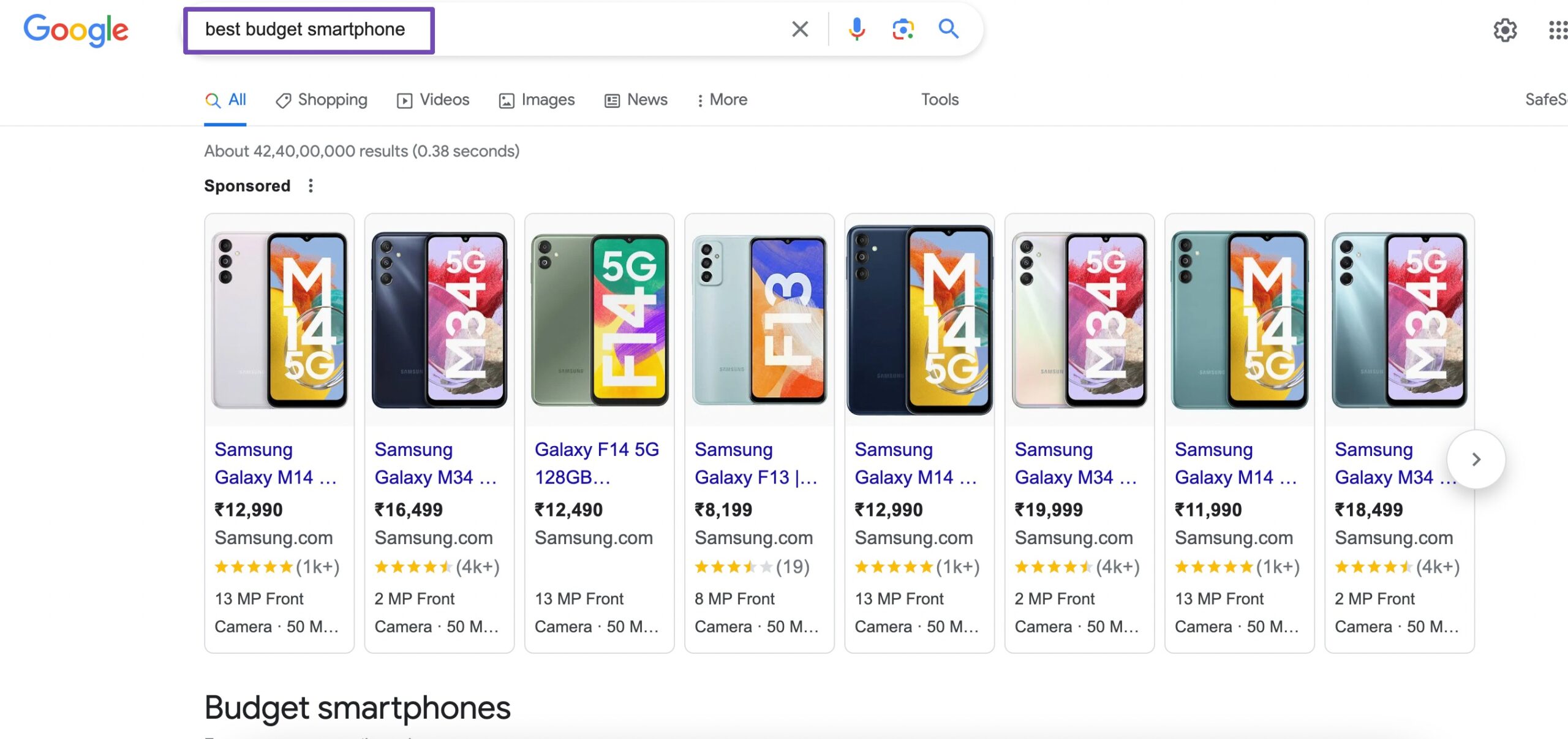
The intent here is likely commercial investigation, where your audience is researching before making a purchase. Aligning your content with this intent involves creating a detailed review of budget smartphones, highlighting features, and providing purchasing recommendations.
2.2 Use Your Primary Keyword Correctly
Effectively using your primary keyword is one of the important SEO practices, ensuring that search engines accurately interpret and rank your content for relevant queries.

The strategic placement of your chosen keyword in key elements such as titles, meta descriptions, and headers is important.
For instance, if your primary keyword is “healthy smoothie recipes,” adding a title like “Delicious and Nutritious Healthy Smoothie Recipes” immediately signals to both your audience and search engines the content’s focus.
Beyond titles, incorporating the keyword naturally into the content itself is essential. An example might be, “In this article, we’ll explore a variety of healthy smoothie recipes that cater to different tastes and dietary preferences.” This approach maintains readability while reinforcing the content’s relevance to the specified keyword.
Refer to our dedicated tutorial to master the art of keyword research.
2.3 Write Compelling Title Tags and Meta Descriptions
Title tags are the main headlines displayed in search engine results. Here’s what a title tag looks like in the search results.
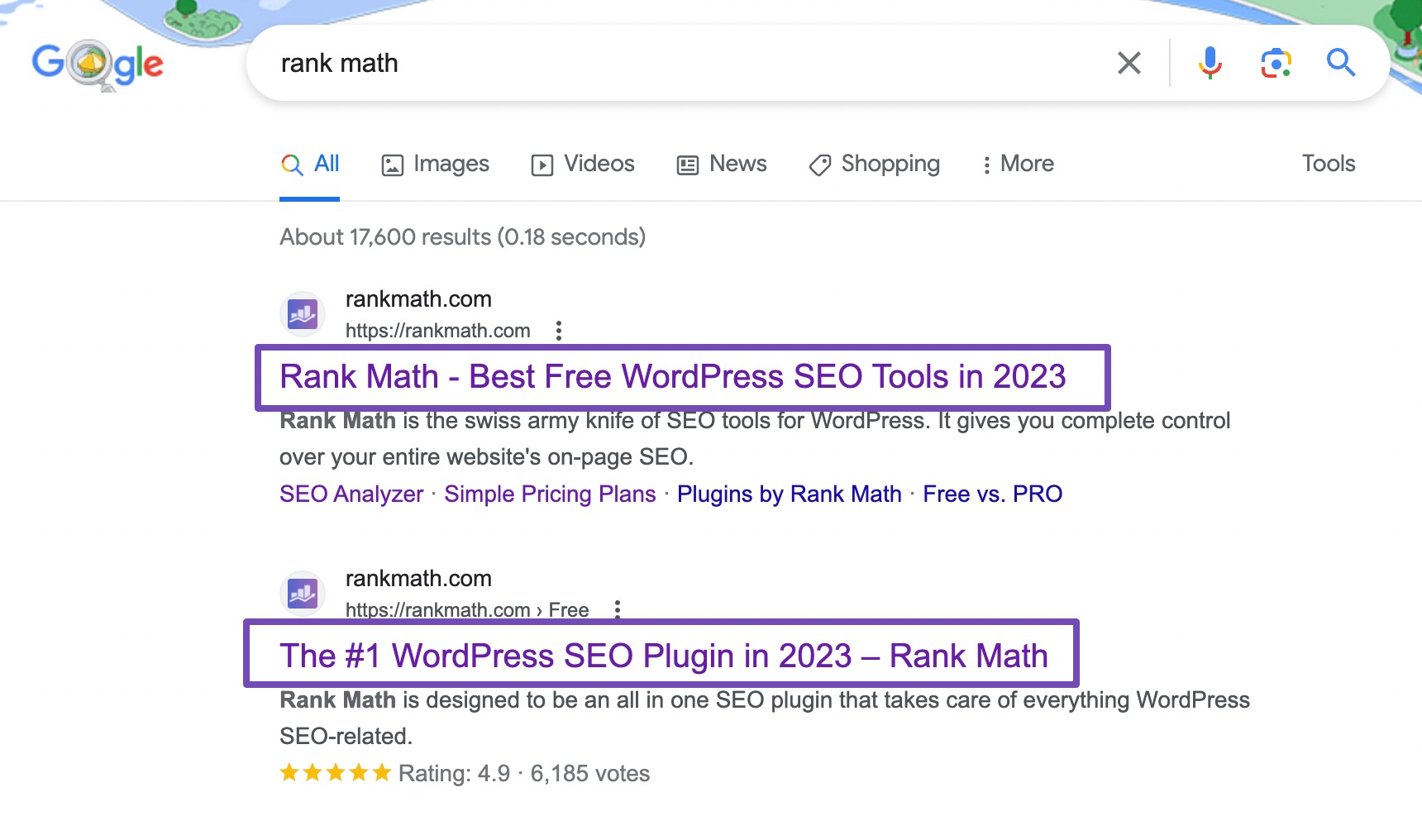
Title tags should be concise, typically under 60 characters, and should probably incorporate the primary keyword naturally.
For example, a travel tips blog could feature a title like “Essential Travel Tips for Adventurers.”
Equally important are meta descriptions, which serve as concise summaries of webpage content. While not a direct ranking factor, well-crafted meta descriptions, typically around 150-160 characters, significantly impact click-through rates.
Here’s what a meta description looks like in the search engine results:

The key is clearly communicating the page’s value proposition, including a compelling call-to-action, and strategically weaving in relevant keywords.
For instance, in the travel blog example, a meta description might read, “Embark on unforgettable journeys with our travel tips. From packing hacks to off-the-beaten-path destinations, discover a world of adventure,” appealing to your audience to explore the comprehensive travel insights that you offer on the page.
You can also use our SEO Description tool to automatically create compelling meta descriptions.
With Rank Math, adding title tags and meta descriptions to your post/page is extremely simple.
2.4 Optimize Your Images
Another SEO practice is optimizing your images. Compressed and appropriately formatted images contribute to a faster page load speed and improve the overall user experience.

One key aspect of image optimization is reducing file sizes without compromising quality, as larger image files can slow down page loading times.
Using tools like Imagify or online platforms like TinyPNG allows you to compress images efficiently.
Additionally, employing descriptive file names and using alt text to provide context to search engines about the image content helps in better indexing and accessibility.
Furthermore, choosing the right image format is essential. While JPEG is suitable for photographs, PNG is preferable for images with transparency, and WebP, a modern format, provides high quality with smaller file sizes.
Implementing responsive image design ensures that images adapt to different device screen sizes, enhancing the mobile user experience.
Rank Math streamlines image SEO effortlessly by automatically incorporating ALT and title attributes into all your images. Additionally, this process doesn’t require any modification to your posts. The tags are dynamically added in real-time, ensuring a seamless and hassle-free optimization experience.
2.5 Add Internal Links
Internal links facilitate navigation for your audience and play an important role in search engine optimization.
By creating a network of interconnected pages, you distribute authority and relevance throughout your site, contributing to improved rankings.

For instance, if you have a blog post discussing “Healthy Smoothie Recipes,” you can use this SEO practice and strategically link to another relevant article on “Nutritional Benefits of Superfoods” within your site. This not only enhances the audiences’ journey by providing additional valuable content but also signals to search engines that these pages are interconnected and collectively contribute to the expertise of your website.
It’s essential to use relevant anchor text for internal links. Instead of generic terms like “click here,” use descriptive phrases that convey the linked page’s content.
For example, if your website offers fitness tips, a well-crafted internal link can be “Discover the best cardio workouts.”
Furthermore, ensure that the structure of your internal links aligns with the hierarchy and organization of your website. This helps search engines understand the importance and relationship between different pages.
2.6 Earn Backlinks to Build Authority
Building a diverse and high-quality backlink profile is essential for establishing authority and credibility in the eyes of search engines.
When authoritative websites link to your content, it indicates to search engines that your information is valuable and trustworthy.
However, not all backlinks are equal. Quality triumphs over quantity in this practice. A single link from a reputable and relevant website can have a more significant impact than numerous links from less reputable sources.
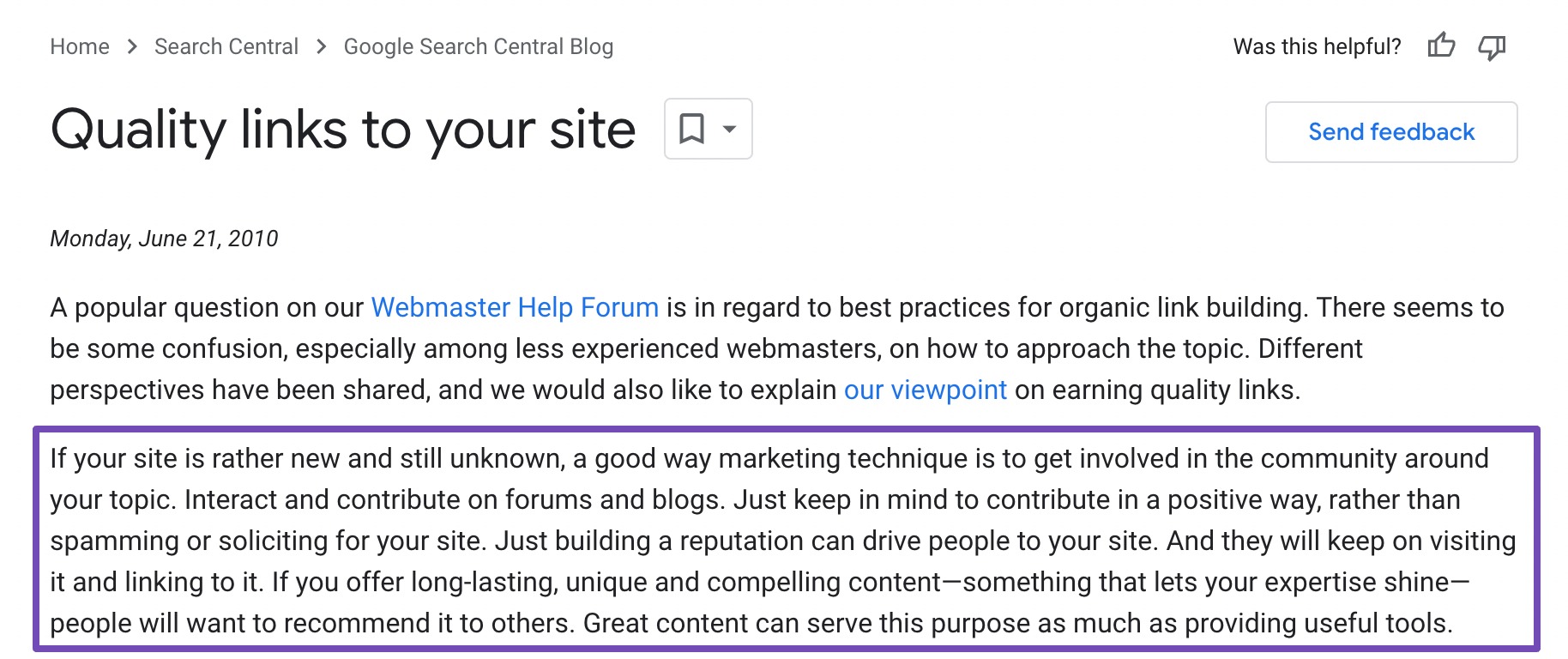
To earn backlinks effectively, create content that stands out, whether through in-depth research, unique insights, or engaging multimedia. Outreach to relevant websites, influencers, or industry experts to share your valuable content, increasing the likelihood of them linking to it.
Refer to our dedicated tutorial on link-building to strategically build links for your website.
2.7 Improve User Experience
Enhancing user experience is another SEO practice that goes beyond mere technicalities, focusing on creating a positive, seamless interaction for your website visitors.
Search engines increasingly prioritize user-centric factors, making a positive user experience essential for higher rankings. For instance, if a visitor lands on a website and finds the content well-organized, easy to navigate, and visually appealing, it contributes to a favorable user experience.
Mobile responsiveness is another key component. With a significant portion of audiences accessing content on mobile devices, ensuring that your website is seamlessly responsive across various screen sizes improves user experience and positively impacts search rankings. You can use the PageSpeed Insights tool to check where your website needs to improve.
Clear navigation and well-structured content contribute to user satisfaction. When visitors easily find what they’re looking for, it reduces bounce rates and signals to search engines that your content is relevant and valuable.
Additionally, engaging content, whether through multimedia elements, interactive features, or informative articles, encourages users to stay longer on your site, further enhancing the user experience.
2.8 Create Useful Content
Google prioritizes content that serves the needs and interests of users.

This involves producing content that aligns with search intent and provides genuine value, answers questions, or solves problems.
Google’s algorithms are designed to gauge user satisfaction, and one of the primary indicators of satisfaction is the time users spend on a webpage.
If your content is engaging, informative, and comprehensively addresses the audience’s query, it will likely keep them on your site for longer durations.
Moreover, when your audience finds your content valuable, they’re more likely to share it, creating organic backlinks and boosting your site’s authority in search engine rankings.
2.9 Reduce Website Load Time
Google places significant emphasis on user experience as a key determinant of Search Engine Results Pages (SERPs).
Various issues can contribute to sluggish load times, including code density, large images, JavaScript complications, caching issues, redundant plugins, excessive redirects, subpar hosting, and more.
Identify and address these factors affecting your website’s load time to guarantee a seamless and delightful user experience. Plugins like WP Rocket help to improve the website’s loading time.
Refer to our dedicated tutorial to optimize your website’s page loading speed with various speed optimization techniques.
2.10 Monitor Your Results With Google Search Console
Google Search Console offers a comprehensive overview of how your site is indexed, what keywords drive traffic, and how users interact with your content.
For example, within the Search Performance report, you can identify the queries that lead the audience to your site, the pages receiving the most clicks, and the average position of your pages in search results.
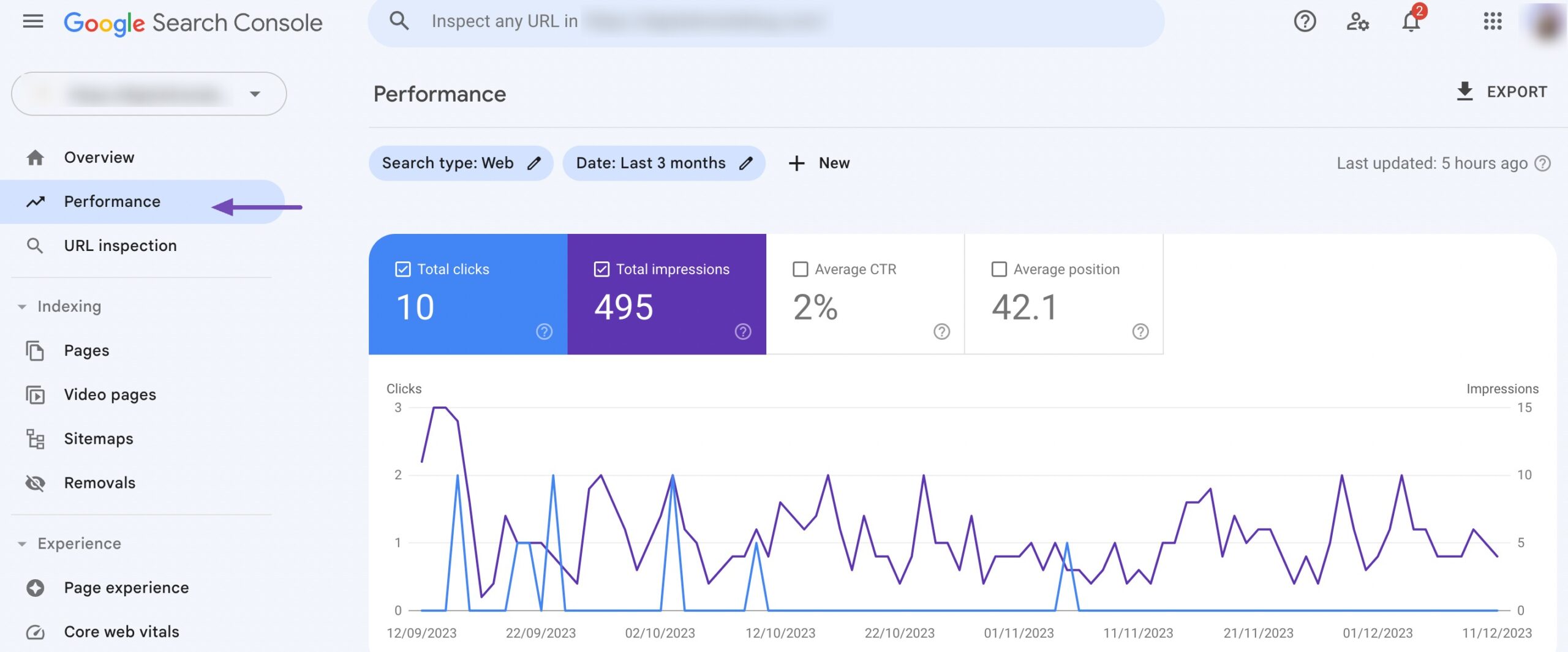
Another aspect of Google Search Console is the Index Coverage report, which highlights any issues affecting how Google crawls and indexes your site.
By addressing these issues, such as fixing crawl errors or resolving indexing problems, you can ensure that your content is properly understood and ranked by search engines. This SEO practice of regularly monitoring and addressing such issues contributes to a healthier and more optimized website.
3 Frequently Asked Questions
What is the importance of user experience in SEO?
User experience is a significant ranking factor. Search engines aim to deliver the best results to users, so a positive user experience, including easy navigation and relevant content, contributes to higher rankings.
How do I measure the success of my SEO efforts?
Use tools like Google Analytics and Google Search Console to monitor organic traffic, keyword rankings, click-through rates, and other relevant metrics. Regularly analyze this data to assess the impact of your SEO strategies.
Can I expect my website to automatically achieve high rankings by adhering to best SEO practices?
Simply following SEO practices does not ensure immediate success in search engine rankings. The outcome depends on various factors, such as the quality of your content, the level of competition in your industry, etc. Success in SEO requires a comprehensive approach and ongoing efforts.
What are the recommended approaches for on-page SEO?
Effective on-page SEO involves optimizing page titles, meta descriptions, header tags, and content with relevant keywords. To learn more, refer to our on-page SEO guide.
What are the recommended approaches for off-page SEO?
Effective off-page SEO involves strategies and activities outside your website but contributes to its online authority and credibility. Some of them include link building, social media engagement, influencer outreach, etc. To learn more, refer to our off-page SEO guide.
4 Wrapping It Up
Implementing the best SEO practices is essential for achieving online visibility, improving search engine rankings, and delivering an optimal user experience.
By focusing on elements such as keyword optimization, creating valuable and relevant content, building high-quality backlinks, and ensuring technical aspects like site speed and mobile responsiveness are optimized, you can establish a strong online presence.
As search engines prioritize user satisfaction and relevance, adopting these SEO practices enhances a website’s discoverability and contributes to sustained success.
If you like this post, let us know by Tweeting @rankmathseo.
